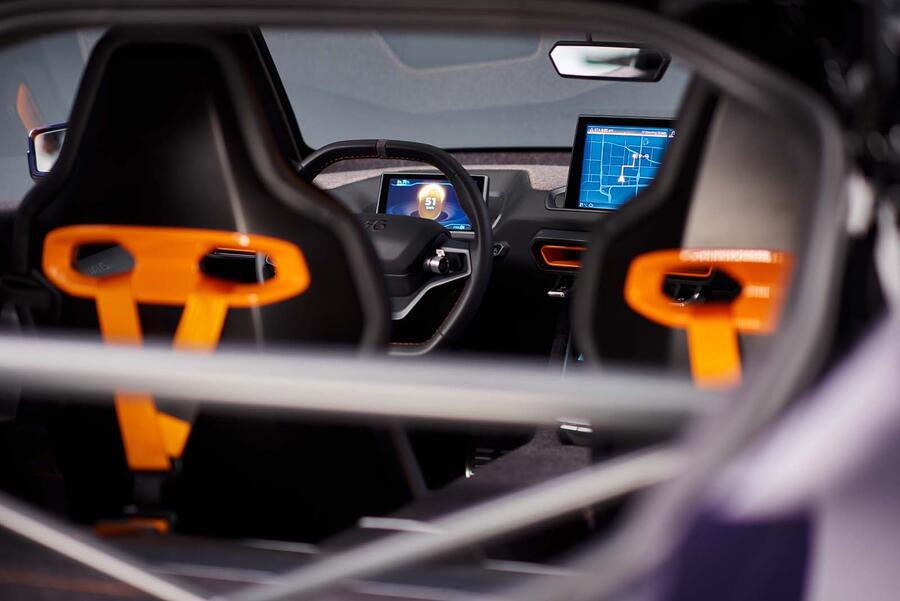A year and a half later, we’re at the Nürburgring looking at a working prototype of that very car. As development times go in this business, that’s pretty short. And it’s particularly impressive given the technology underneath.
The RG Nathalie, named after Gumpert’s daughter, joins the ever-swelling ranks of electric supercars from Chinese start-ups. Aiways perhaps stretches the definition of a start-up, with more than £1.3bn of starting capital, but, as is usually the case, its ambitions are strong. It’s already built a factory in China with the capacity to produce 150,000 cars a year, and development of the RG Nathalie was done alongside its first mass-market offering: the U5 Ion electric SUV.
RG Nathalie: the technical details
The RG Nathalie is more relevant than some other electric supercars from the Far East, not least because Aiways plans on building several hundred, rather than a handful, with a price of around €400,000 targeted. But also because of its clever powertrain.
Propulsion is taken care of by four Bosch electric motors, two mounted on each axle, each providing a peak power output of 137bhp and 170lb ft of torque. The combined system output is estimated at about 430bhp, but a substantial (as yet unquoted) amount of total torque translates to a 0-62mph time of 2.5sec.
The RG Nathalie uses a two-speed gearbox, shifting out of its acceleration gear and into a longer-range gear at 100mph. A top speed of up to 190mph is claimed but as yet unverified. These numbers come as no surprise for anyone who’s read about the glut of electric hypercars in the works, but the RG Nathalie has another trick up its sleeve.

You see, it has a fuel cell stack under its bonnet. And Gumpert isn’t following the masses by using ‘unbound’ hydrogen to power it. Instead, the cell, developed by Danish firm Serenergy, is powered by a mix of water and alcohol – methanol, to be specific.
It uses what’s called a high-temperature proton exchange membrane to obtain hydrogen from methanol using a catalytic reaction. Often, excess hydrogen is wasted as a result, but this cell uses that energy to keep the catalytic reaction going, resulting in a higher electrical efficiency than regular hydrogen cells.
There are a number of benefits to using methanol instead of pure hydrogen. Firstly, it’s far easier to store, because it’s less volatile, meaning it could become part of our infrastructure more easily. It also doesn’t need high pressures to operate in a fuel cell. The downside is that the fuel cell is generally less powerful and produces CO2. Engineers estimate that if the methanol is produced using fossil fuels (as it often is now), that equates to roughly 30g/km of CO2 emission for the RG Nathalie.